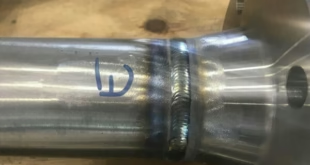Proper Alignment and Joint Fit-up
Proper alignment and joint fit-up play a pivotal role in ensuring the structural integrity and overall performance of various components, from construction projects to industrial machinery. Achieving a seamless connection between parts not only enhances the mechanical strength but also reduces the risk of failure, resulting in safer and more reliable systems. In this comprehensive guide, we delve into the intricacies of proper alignment and joint fit-up, providing actionable insights for professionals and enthusiasts alike.
Introduction
Proper alignment and joint fit-up refer to the meticulous process of aligning and fitting two or more components together with precision, ensuring that their edges, surfaces, or interfaces form a seamless connection. This alignment is crucial across industries, from welding and metal fabrication to construction and manufacturing. Let’s explore the fundamental aspects of this practice that contribute to the creation of robust and enduring structures.
The Importance of Proper Alignment and Joint Fit-up
Proper alignment and joint fit-up are vital for several reasons:
- Enhanced Structural Integrity: When components are perfectly aligned and fitted, the resulting structure boasts higher mechanical strength and load-bearing capacity, reducing the risk of premature failure.
- Uniform Stress Distribution: Well-fitted joints distribute stress and forces uniformly across the connected parts, preventing localized stress concentration that could lead to cracking or deformation.
- Improved Performance: Properly aligned components function optimally, reducing friction, wear, and energy loss, thus enhancing the overall performance and efficiency of the system.
- Safety First: In sectors such as construction and aerospace, ensuring proper alignment and fit-up is paramount to ensure the safety of workers and end-users, avoiding catastrophic failures.

Techniques for Achieving Proper Alignment and Joint Fit-up
- Precision Measurements: Accurate measurements using tools such as micrometers and laser alignment devices are crucial to achieving proper alignment.
- Surface Preparation: Surfaces must be clean and free from contaminants to ensure a flawless fit.
- Tolerance Consideration: Understanding tolerances and clearances is essential to avoid overly tight or loose connections.
- Shimming: Shims, thin pieces of material, are often used to adjust the alignment by filling gaps and achieving the desired fit.
- Clamping and Fixturing: Temporary clamps and fixtures can hold components in place during the assembly process, ensuring precise alignment.
Challenges and Solutions
- Challenge: Complex Geometries Solution: Utilize advanced computer-aided design (CAD) software to simulate and optimize alignment before actual assembly.
- Challenge: Large-Scale Projects Solution: Implement laser trackers and 3D scanning technology for accurate alignment in extensive projects.
- Challenge: Temperature Variations Solution: Account for thermal expansion by aligning components at operating temperature.
Achieving Optimal Joint Fit-up in Welding
In welding, achieving proper joint fit-up is essential to produce strong and durable welds. Here’s a step-by-step guide:
- Preparation: Clean the surfaces, remove rust or paint, and bevel the edges for better penetration.
- Alignment: Ensure precise alignment of the parts, using jigs or fixtures if necessary.
- Tack Welding: Create temporary tack welds to secure the alignment before the final welding.
- Root Welding: Begin with the root pass, ensuring complete fusion at the joint interface.
- Fill and Cap Passes: Layer by layer, add fill and cap passes to achieve the desired weld thickness.
FAQs
Why is proper alignment crucial in construction?
Proper alignment ensures that load distribution is uniform, preventing weak points that could lead to structural failure.
What industries benefit from accurate joint fit-up?
Industries such as aerospace, automotive, and shipbuilding heavily rely on accurate joint fit-up for safety and performance.
Can I achieve proper alignment without specialized tools?
While some basic alignment can be done manually, precision alignment often requires specialized tools for optimal results.
How does improper alignment affect machinery?
Improper alignment can lead to increased wear and tear, decreased efficiency, and even catastrophic breakdowns in machinery.
Are there software solutions for alignment optimization?
Yes, various CAD and simulation software allow engineers to visualize and optimize alignment before physical assembly.
What role does training play in achieving proper alignment?
Proper training is essential to understanding alignment principles, techniques, and the use of alignment tools effectively.
Conclusion
Proper alignment and joint fit-up are indispensable for achieving structural integrity, longevity, and optimal performance in various industries. By following precise measurement techniques, utilizing advanced tools, and employing expert strategies, professionals can ensure robust connections that stand the test of time. Whether in construction, manufacturing, or engineering, the art of proper alignment and joint fit-up remains a cornerstone of success.
 Welding of Welders All about Welding and Welders
Welding of Welders All about Welding and Welders



